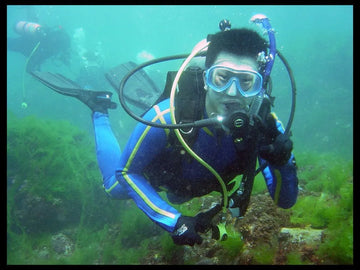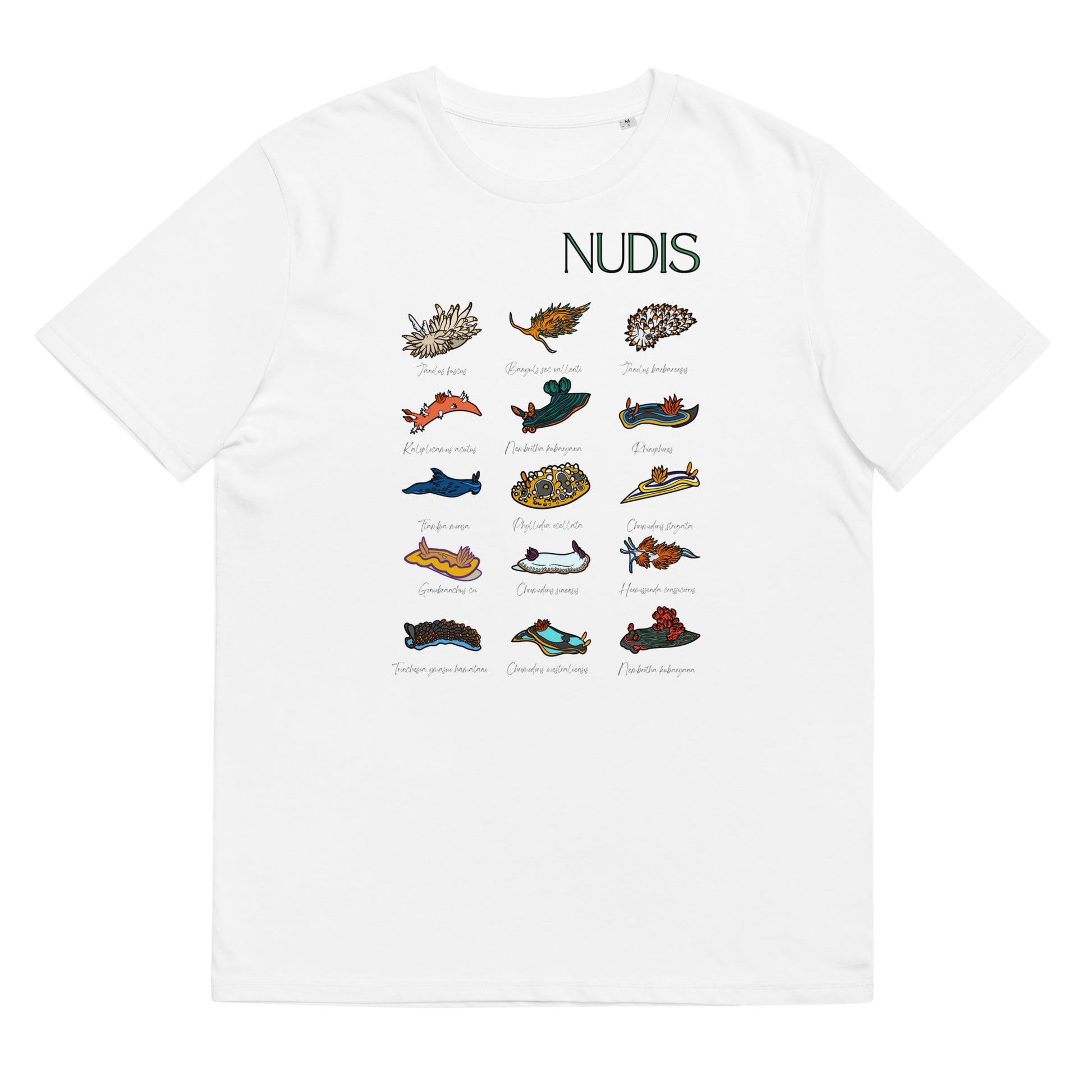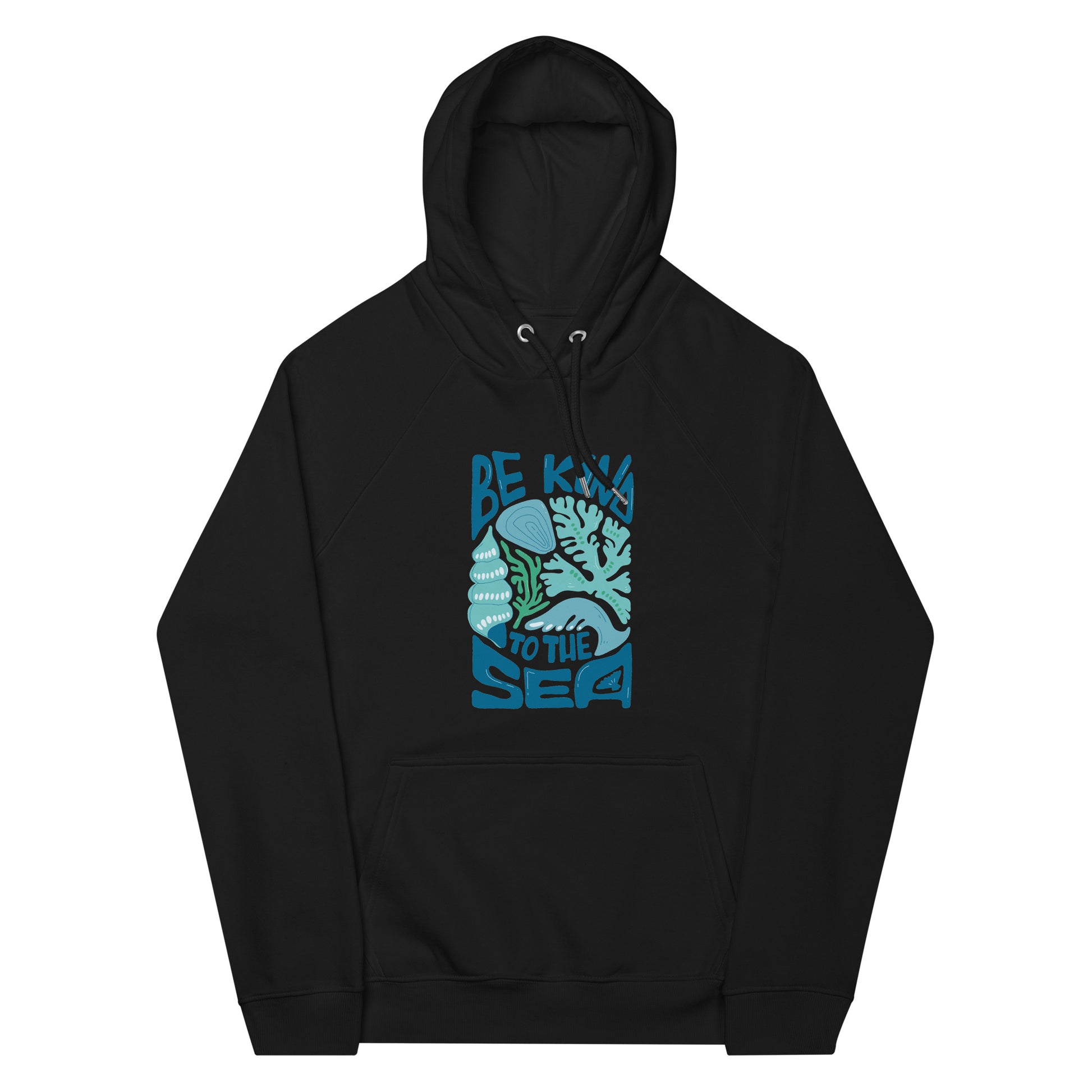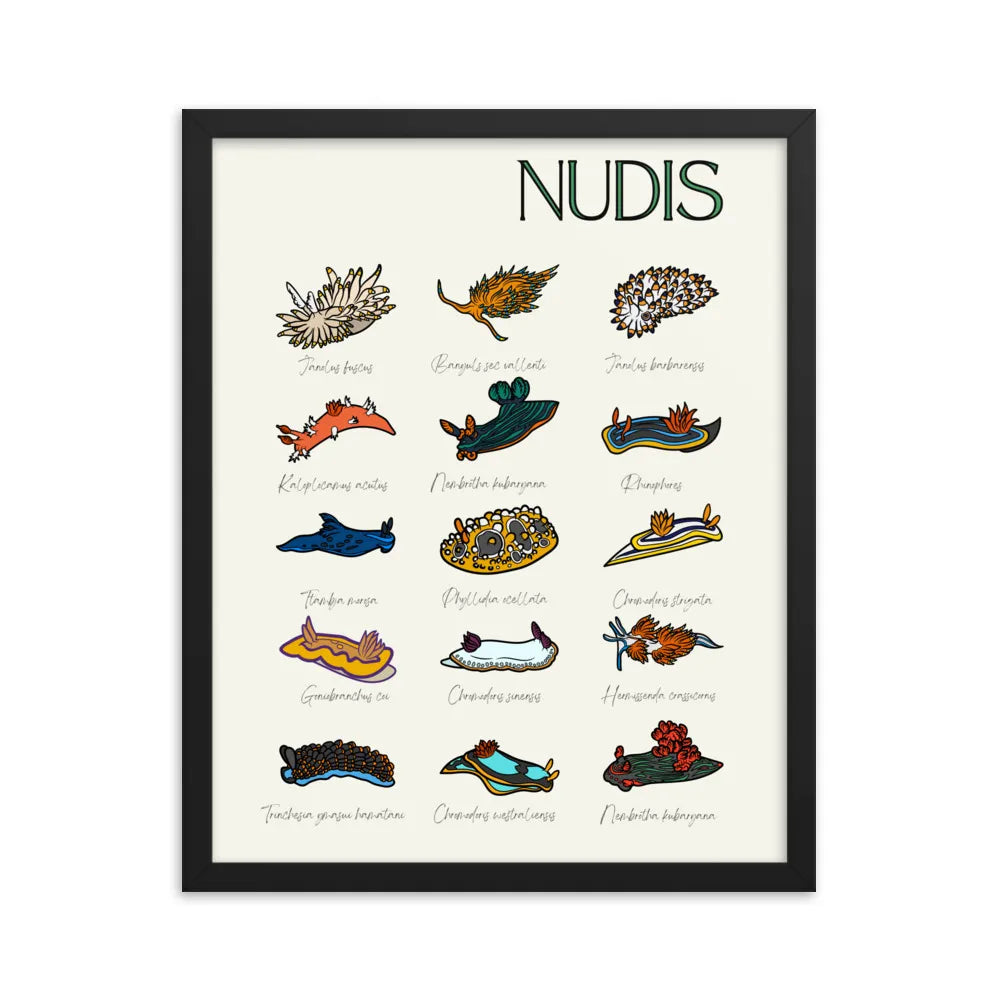More than to guide you on how to get your Open Water Diving certification the cheapest way (this is exactly where you should be least guided by the price and more by the quality of the instructors and the dive center), in this article (long, I warn you) we will try to guide you so that you do not spend a lot of money on diving equipment during your first steps as a diver. First of all, because over time you will realize the wide variety of prices, accessories, brands and elements that surround the world of diving. If you make impulse purchases, you may be making a mistake. Second, because a high percentage of OWDs do not continue diving after certification, and if you are one of them, you will thank us for not spending a lot of money for just 20 dives.
So we're going to try to answer two of the most frequently asked Open Water Diver question: "What should I buy first?"
1. Diving mask, snorkel, knife
In the beginning it is very important to feel comfortable and safe. It makes the difference between continuing to dive or quitting, and being comfortable with your mask is the first step. When you are learning to dive, there is nothing more annoying than a foggy or partially flooded mask. You'll just be trying to clear it, and you won't be enjoying the dive.
T-shirts designed by divers for divers
VIEW MORE T-SHIRTS FOR DIVERS
Everyone has very different facial features: the nose, the width of our face, the distance between the eyes or the type of bridge of the nose is different in each of us. All divers are incredibly beautiful... but in a different way :-)
The fact that the mask fits better or worse to our face will make us more or less comfortable and, among other things, we can equalize better or worse. It is not that there is a specific mask for your face, but there are many more different models in the store than in the dive center you just arrived at.
Remember, you do not have to spend a lot of money on this equipment. Cressi have great masks and you can find them online for around USD 40, but always buy them after trying them out. If you have a little more budget you can try the Aqualung Micromask for about USD 90 and you will have an excellent mask for a long time.
The snorkel is almost necessary for your first dives. When you start diving, you usually use a lot of air from your tank due to various factors (you are excited, nervous, use your fins too much, lack of buoyancy...) and saving as much of that tank as possible at the surface will allow you to stay a little longer underwater (in the beginning, 5 minutes more down is a lot) and dive much more relaxed. There is no need to spend USD 60 on a snorkel, with a USD 10 snorkel will be enough.
Regarding the dive knife, there are two reasons why you should buy one as soon as you get your Open Water certification: safety and obligation. Although on your first few dives you will always be with a guide who will (or should) be carrying one, he may forget it and two may be needed to help a buddy or an animal that has hooked on to a net. In addition, there are diving areas in the world that require you to carry a knife, so it is a good idea to buy one as soon as you get your certification.
There are many types of dive knives and it is up to you what you want to spend on them. If your budget is large, you can spend $100 for a good titanium knife that will last hundreds of dives in good condition. If you do not have a big budget or you are one of those who loses everything, there are special scissors for diving or decent knives for less than USD 25. Diving knives are cheap, take up little space to carry, and if you have to use it on a very rare occasion, you will appreciate having it with you.
Summary: You can start your first post-certification dives feeling comfortable, safe and an intrepid adventurer with a knife included for less than $100. All you have to do is rent the rest of the equipment and keep learning.
2. Diving suit, gloves and boots
Once you do a few dives, you start to feel comfortable underwater and if you want to continue to complete the equipment, it's time to go back to the store. These three elements of diving equipment that I think should be purchased in a second phase are not only for hygiene, especially the suit (you know that there are only two types of divers in terms of urinating during dives...), but also for comfort and safety. Not all dive centers will have your size, or maybe you are very cold-blooded and do not have the thickness you like, and it is even possible that the dive center does not have suits in the best possible condition.
The suit has to fit well, and not just for your Instagram pictures. You need to feel comfortable and be able to move freely. It is important that your chest and neck are not constricted so that you can breathe deeply. It is important that the suit is well cared for from the beginning so that it does not lose its flexibility and does not leak. When you buy the suit, make sure it is comfortable to put on and take off (you do not know how much energy is lost if the suit cannot be put on properly).

You should be as comfortable as Aquaman in your wetsuit
It would be a good idea to try several different models and brands on your first few dives by renting them from dive centers. You can compare models, thicknesses, accessories such as knee and elbow pads, zipper quality and even colors or hoods. And do not hesitate to take advantage of the moments on the boat or in the changing room with your dive buddies to ask them about their wetsuits, remember that there are three things that divers love: the first beer after the dive, the one after that first beer and talking about their diving gadgets. Do not hesitate to ask them about their wetsuits, they would love it.
Wetsuits are not cheap, but you can get a decent 5mm wetsuit for around USD 200. However, if you plan to continue diving, the most important thing is to have your own wetsuit that you feel really comfortable in and that is reliable. Good wetsuits can last a few hundred dives if you take good care of them, and it will be cheaper to buy one good (and probably expensive) wetsuit than two because the first one was cheap and uncomfortable.
Diving gloves are also a very personal choice. There are divers who feel very uncomfortable with the rest of the team wearing gloves, and others who use them on every single dive. More than an element to keep your hands from getting cold (which they do on certain occasions), they are an element of protection. When you are learning to dive and manage your buoyancy, it is often necessary to put your fingers on a rock to stabilize yourself. With gloves on, it will be much more difficult to get hurt by an animal or the hull of a wreck.
Again, there is a huge variety in price and quality of diving gloves. From the simplest of USD 20 to the most sophisticated dry gloves of USD 150. If you are the kind of person who loses your keys easily and you will not be diving in cold water, some simple and cheap gloves will work for you. If you are very comfortable with gloves, you may want to invest a little more in ones that offer more protection and are warmer, such as the Bare K-Palm, which comes with Kevlar reinforcement.
In my opinion, the boots that work well are all that are your size, and remember that these tips are for divers who have just got certified and are not going to dive in cold waters or do any tec diving. Among the USD 30 Cressi indestructible boots that all dive centers have (3 points for the commercial of the Italian brand that has placed them in dive centers around the world) to Poseidon One shoe look like Converse Chuck Taylor very common in tec divers, there is a world of options. Try different models in the diving centers to compare... and if you find one that does not have the Cressi boots, tell us about it :-P
Summary: With a good part of your equipment and only about $400 spent on it... now comes the good part.
3. Diving regulator
The next step, also for hygiene, but above all for safety, we believe it is the purchase of the regulator, always bearing in mind that we have a limited budget. Sometimes we go to a dive center that we don't know much about and few of us think to ask when was the last time it was checked, or where, or how, so we don't know what we are going into the water with. With your own regulator, you know its quality, when it was last serviced, the approximate number of strokes you have given it, or how easy it is to give you air.
Aside from the obvious hygienic benefit (I realize as I write this how unscrupulous most divers are), there is also the comfort of being able to replace the mouthpiece of your regulator with a silicone mouthpiece that fits the size and shape of your jaw. For many divers this is a pleasure and they have more relaxed dives and less jaw pain. This gives you a lot of comfort and for many it even helps to equalize.
Of course, you have to be prepared to spend about $200 for the simplest regulators to $1,000 for the most expensive ones... but it is certainly advisable to have yours in not too much time if you plan to continue diving.
4. BCD
When you have your own BCD, two things happen: you finally feel like a 100% diver and your buoyancy improves enormously. When you rent a BCD, it is almost impossible to find the same model in the same size in different centers and you will see that even though they are similar, some fit you better than others and that they have different configurations, integrated weights or not... which on the other hand is a good learning experience for when you go to the store. When you go to choose your first BCD, you will know what you are looking for in each one and what is important for your diving style.
Try different models before you buy yours and, as always, ask your buddies. The widest range is between $250 and $350 and as much as the product marketing geniuses of the dive brands insist, there is not much difference in quality in this price range.
5. Dive computer
This is perhaps the most confusing part of the purchase process. When should I buy a dive computer? Is it advisable to buy it at the beginning?
Hoodies Designed for the Deck of Your Liveaboard
SEE MORE SWEATSHIRTS FOR DIVERS
Let's face it, we're lazy, and when we've got it all done, it's hard for us to complicate our lives to learn how to use something as important as the decompression tables. Would you learn to use the tables if you bought a computer at the same time you got your certification? The vast majority would not. Is it safer to dive with a computer than without? Well, it is safer, yes.

Typical Red Sea Underwater Bazaar
Of course you will have to buy your own computer, but at this point we are considering that you are learning, you have little experience and a small budget (we are assuming that you will not do many dives, otherwise you will have to buy it because it is necessary in many places). During this time you will always be accompanied by the guide and the computer is another distraction from learning how to swim and use the equipment. It also prevents you from learning how to calculate with the tables, which will come in handy when you get certified to dive with NITROX, for example. But at some point you will have to consider buying and learning to use a dive computer. Which one to buy?
Again, there are many options, it depends on your budget, your needs, the type of diving you do... For starters, it is important that it is easy to use, that you can clearly see your ascent rate or safety stops, that it has good light for night dives, that it has audible alarms, that it has NITROX mode and that you don't have to go crazy looking for someone to change the battery. It is also important that it is rugged and well protected, because the knocks it will take are inevitable.
There are divers who feel very comfortable with large computers like the classic Aladin and others who prefer that it is not bigger than a watch and can use it beyond diving. A very good option for its quality and price (less than $200) for a first computer is the Suunto Zoop.
6. Fins
Until you are taught/learned how to fin properly, I would advise you not to buy fins. You may make a mistake and be guided more by what the store wants to sell you, the color or the price. The type of fin you choose depends on the type of diving you will be doing (such as the current you will be facing) as well as the strength of your legs. When you are learning, you don't yet know how to kick and you will find that the length, stiffness and width of each fin will affect your buoyancy. If you are physically fit and strong, a good hard and wide fin is a good choice, but if you are going to be diving in calm waters, especially from infantry, you may prefer a softer fin.
Small tip: fins take up a lot of space and it is advisable not to make a mistake when purchasing. Try as many as you can every time you go diving with your local dive center, rent different models, brands, hardness. This way your purchase will be much better when you finally decide on a pair. Take your time when buying fins.
7. Diving bags and trolleys
If you already have the fins, you have managed to complete a nice team and it might be convenient to throw away that rusty blue bag from Ikea to store and transport your equipment. At this point you should get a bag, suitcase or box with two important features: wheels and a sturdy handle.
If dry gear weighs a lot, imagine the weight of wetsuit, gloves, booties, etc. when they are still wet, if not dripping. If it is painful to return to reality after a diving vacation, it is even more so when you have to throw a 35 kg bag on your back or pretend not to pay extra for overweight at the airport.
You can find plastic boxes with wheels and enough capacity at Decathlon (yes, this time), use a garden tool box or even buy a real diving trolley with side pockets for fins and special compartments for all your stuff for less than $100. Undoubtedly the best option if you go on trips.
8. Underwater cameras
Unless you have very good buoyancy from the start, we think it is advisable not to buy an underwater camera until you have made a few dives. I'm sure you'd rather buy a GoPro than a regulator, but the first thing you have to learn to take good pictures is to dive and look at the ocean with your eyes, not through a camera's viewfinder.
Become familiar with all the equipment, learn to control your buoyancy, marvel at the ocean just by watching. If at some point you feel the call of photography or video, it will be a good time.

Instagram is full of great photos from just about every place in the world, photos that I'm sure you'll end up taking just as well, but first learn how to use the rest of your equipment and your body underwater.
9. Lighting
Torches are not necessary in this first phase of being an Open Water Diver (because you won't be doing night dives until you get the Advanced, right?), so it's better not to complicate things and spend a lot of money on lights yet. They are very expensive and fragile, you will get one the day you get the AOWD. And if you want to do a night dive as a PADI Adventure Dive first, the center will let you have one.
10. Accesories
Belt, fin straps, rattles, mask strap, compass, special hanger, undershirt, marker buoy, extendable clips, ear plugs, etc.... Many of these accessories have to do with the type of diving of each one, their preferences, tastes and hobbies. Above all they will give you more comfort but they are not essential except, perhaps, the buoy. You will learn with each dive and, depending on how curious you are, from your buddies as well as from what you learn from specialized media.
You finally have a complete kit!... which will get better and better, more expensive and take up more and more space :-)
The Best Gifts for Divers - Worldwide Shipping!
SEE MORE GIFTS FOR DIVERS
Logbook
For those of you who have made it this far, we have a special recommendation: use your logbook! If you write down in your logbook how you feel with your equipment, with each item you rent, it will be easier for you to make the right choice the day you decide to buy your equipment. Write down the model of the jacket that made you feel safe, the brand of the wetsuit, help yourself to remember if the fins were easier for you with that model, if the regulator was comfortable or if you liked the console with the built-in compass, was the toe of those booties too hard? in short, write down everything you think is useful to spend the least amount of money to have the most suitable equipment for you.



























